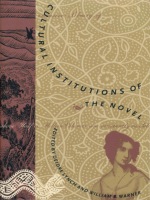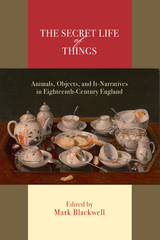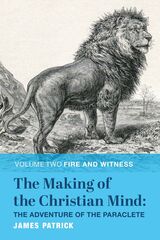2 books about Lynch, Deidre

Cultural Institutions of the Novel
Deidre Lynch and William B. Warner, eds.
Duke University Press, 1996
The story of the development of the novel—its origin, rise, and increasing popularity as a narrative form in an ever-expanding range of geographic and cultural sites—is familiar and, according to the contributors to this volume, severely limited. In a far-reaching blend of comparative literature and transnational cultural studies, this collection shifts the study of the novel away from a consideration of what makes a particular narrative a novel to a consideration of how novels function and what cultural work they perform—from what novels are, to what they do.
The essays in Cultural Institutions of the Novel find new ways to analyze how a genre notorious for its aesthetic unruliness has become institutionalized—defined, legitimated, and equipped with a canon. With a particular focus on the status of novels as commodities, their mediation of national cultures, and their role in transnational exchange, these pieces range from the seventeenth century to the present and examine the forms and histories of the novel in England, Nigeria, Japan, France, New Zealand, Canada, and the United States. Works by Jane Austen, Natsume Sôseki, Gabriel García Márquez, Buchi Emecheta, and Toni Morrison are among those explored as Cultural Institutions of the Novel investigates how theories of “the” novel and disputes about which narratives count as novels shape social struggles and are implicated in contests over cultural identity and authority.
The essays in Cultural Institutions of the Novel find new ways to analyze how a genre notorious for its aesthetic unruliness has become institutionalized—defined, legitimated, and equipped with a canon. With a particular focus on the status of novels as commodities, their mediation of national cultures, and their role in transnational exchange, these pieces range from the seventeenth century to the present and examine the forms and histories of the novel in England, Nigeria, Japan, France, New Zealand, Canada, and the United States. Works by Jane Austen, Natsume Sôseki, Gabriel García Márquez, Buchi Emecheta, and Toni Morrison are among those explored as Cultural Institutions of the Novel investigates how theories of “the” novel and disputes about which narratives count as novels shape social struggles and are implicated in contests over cultural identity and authority.
Contributors. Susan Z. Andrade, Lauren Berlant, Homer Brown, Michelle Burnham, James A. Fujii, Nancy Glazener, Dane Johnson, Lisa Lowe, Deidre Lynch, Jann Matlock, Dorothea von Mücke, Bridget Orr, Clifford Siskin, Katie Trumpener, William B. Warner
[more]

The Secret Life of Things
Animals, Objects, and It-Narratives in Eighteenth-Century England
Mark Blackwell
Bucknell University Press, 2023
Enriching and complicating the history of fiction between Richardson and Fielding at mid-century and Austen at the turn of the century, this collection focuses on it-narratives, a once popular form largely forgotten by readers and critics alike, and advances important work on consumer culture and the theory of things. The contributors bring new texts—and new ways of thinking about familiar ones—to our notice. Topics range from period debates about copyright to the complex relationships with object-riddled sentimental fictions, from anti-Semitism in Chrysal to jingoistic imperialism in The Adventures of a Rupee. Essays situate it-narratives in a variety of contexts: changing attitudes toward occult powers, the development of still-life painting, the ethical challenges of pet ownership, the cult of Sterne and the appearance of genre fiction, the emergence of moral-didactic children’s literature, and a better-known tradition of Victorian thing-narratives. Stylistically and thematically consistent, the essays in this collection approach it-narratives from various theoretical and historical vantage points, sketching the cultural biography of a neglected literary form.
Published by Bucknell University Press.
Distributed worldwide by Rutgers University Press.
Published by Bucknell University Press.
Distributed worldwide by Rutgers University Press.
[more]
READERS
Browse our collection.
PUBLISHERS
See BiblioVault's publisher services.
STUDENT SERVICES
Files for college accessibility offices.
UChicago Accessibility Resources
home | accessibility | search | about | contact us
BiblioVault ® 2001 - 2024
The University of Chicago Press









